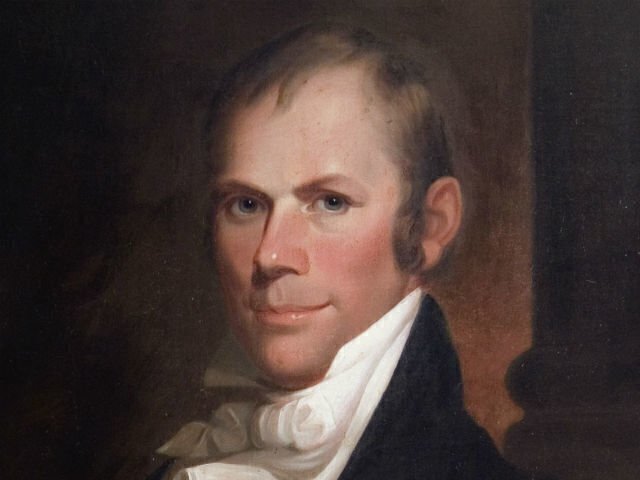On December 4, 1839, the Whig Party held its first national convention, an important milestone in its rise to political power.

Five years earlier, several regional political factions pulled together to form a loose coalition united by one thought: their hatred of President Andrew Jackson. They adopted the name “Whig” in reference to Colonial Americans who opposed King George III called the “American Whigs.” The new Whigs saw President Jackson as a king with unrestrained powers.
The powerful Kentucky political leader, and failed 1832 presidential candidate, Henry Clay (left) became a driving force behind the Whigs. Clay and a group of northern politicians, including Daniel Webster, wanted a large national infrastructure program. After the Nullification Crisis, John C. Calhoun and southern states’ rights advocates also joined the coalition. And the members of the Anti-Masonic Party, which opposed the alleged influence of Freemasons in society, became affiliated with the Whigs – but not necessarily Henry Clay.
In an attempt to prevent Jackson’s hand-picked successor, Martin Van Buren, from winning the White House in 1836, the Whigs picked three regional leaders, including Harrison, in an attempt to divide the Electoral College. Harrison finished second to the victorious Van Buren.
Seeking to avoid another failure to remove Van Buren, the Whigs met in Harrisburg, Pa., in late 1839 to agree on a common presidential ticket. The 1839 Whig national convention saw the party unite behind Harrison after Clay failed to gain enough popular support to be a viable candidate. General Winfield Scott also appeared on the convention ballot.
The second contest between Harrison and Van Buren, featuring stump speeches, smear campaigns, and dirty tactics, was one of the first examples of a modern presidential campaign. The united Whigs used campaign slogans, music, and mass rallies (with lots of whiskey and hard cider) to get out the vote for Harrison. Harrison also took the unusual step of actually going out on the campaign trail.
Harrison won the electoral college vote easily, but the popular vote was very close. The Whigs had won with 240 electoral votes, compared with 60 for the Democrats. But Harrison only took the popular vote by about 150,000 votes.
But after just over a month in office, Harrison died of complications what was believed to be pneumonia. His vice president, John Tyler, did not fare well with the Whigs since he was a former Democrat. Tyler quickly antagonized his new party, and the Whigs eventually expelled him from their party while he was still President.
In 1844, the Democrats regained the White House when former Speaker of the House James Knox Polk, who was supported by former President Jackson, defeated Henry Clay in the general election. Polk won the Electoral College by taking New York, but he only led Clay in the national popular vote by 40,000 votes. But cracks started to appear in the Whig coalition over the issues of territorial expansion and slavery.
Four years later, the Whigs were able to get a second candidate elected as President. Zachary Taylor, the Whig presidential candidate, was a slave owner and a popular figure after the Mexican-American War. Milliard Fillmore balanced the ticket as a known, anti-slavery Northerner; he was promoted by New York state political power broker Thurlow Weed, a former Anti-Mason.
Taylor’s victory over Lewis Cass and former President Van Buren in 1848 was the high-water mark politically for the Whigs. Within a decade, the party would disappear, as its various factions became more and more divided over the issue of slavery.
Congress was involved in a heated debate in 1850 about the future of slavery in newly acquired territories and states when Taylor died in office. President Fillmore worked with a rising Senator, Stephen Douglas, from the rival Democratic Party on a package of laws that admitted California as a free state, but also granted some important concessions to pro-slavery forces.
Fillmore had greatly upset members of both the Democrats and the Whigs with the Compromise. And it dealt a fatal blow to the Whig Party, which had now firmly divided into an anti-slavery northern section and a pro-slavery southern section. At the 1852 Whig convention, Fillmore couldn’t gain support for the presidential nomination he sought at the last moment; General Winfield Scott became the candidate, and he stood little chance against the Democratic Party.
The battle between pro-slavery and anti-slavery factions within the Whig party ended when the Kansas-Nebraska Act was passed in 1854, allowing new territories and states to decide on their own if they would allow slavery. The Northern Whigs left the remnants of the Whig Party to form the new Republican Party. Other Whigs joined the Democrats or regional factions.
Former Whigs who founded the Republican Party included Thaddeus Stevens, Charles Sumner, William Seward, and Abraham Lincoln.
Scott Bomboy is editor in chief of the National Constitution Center







